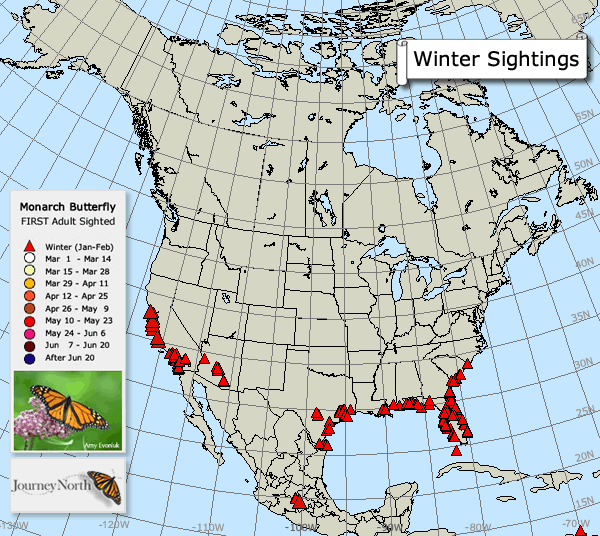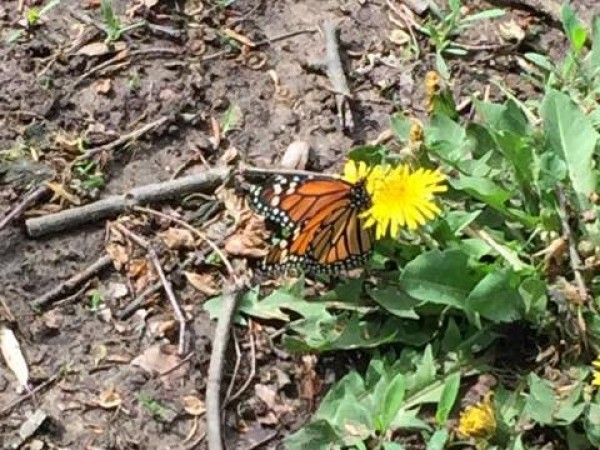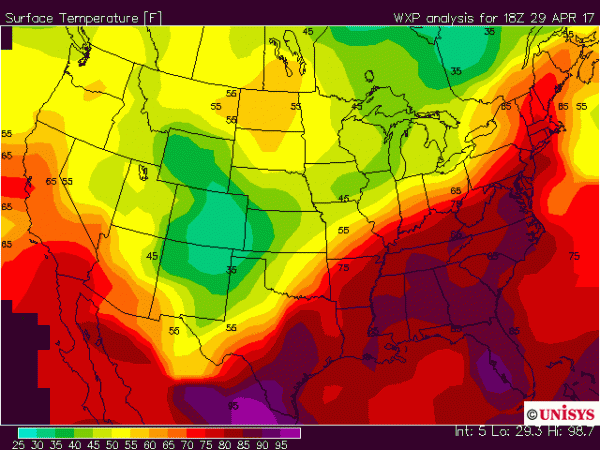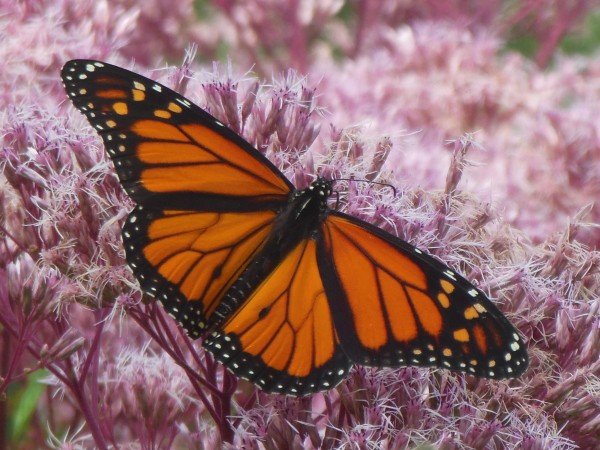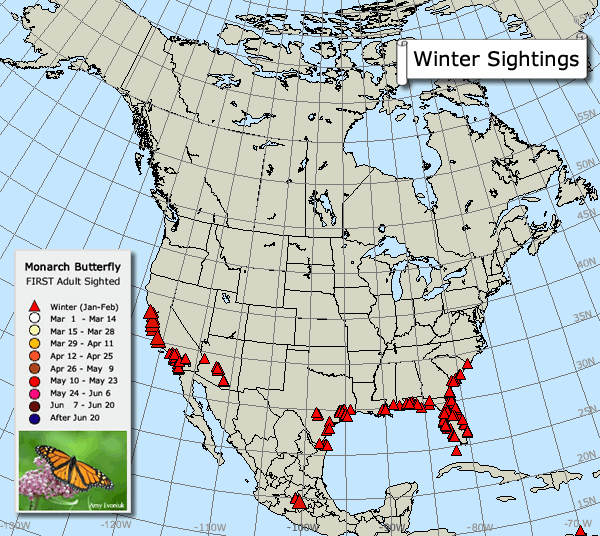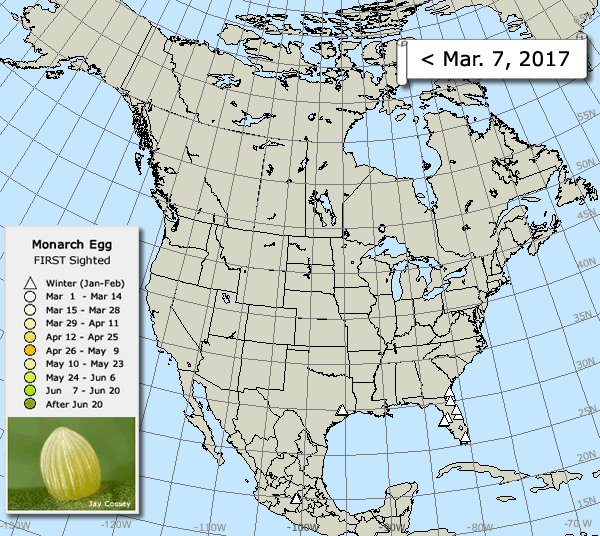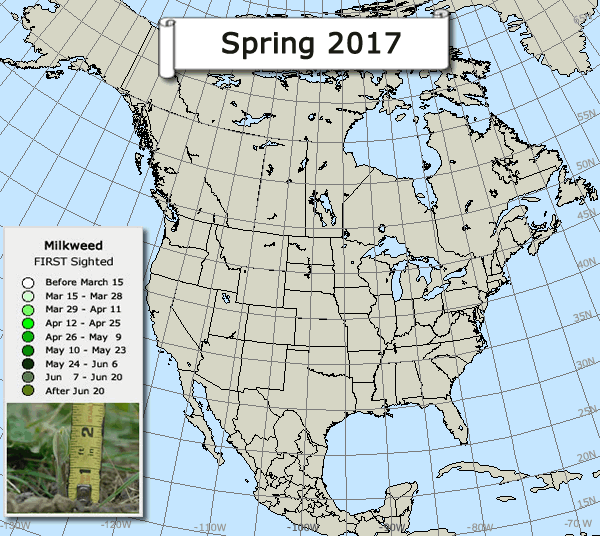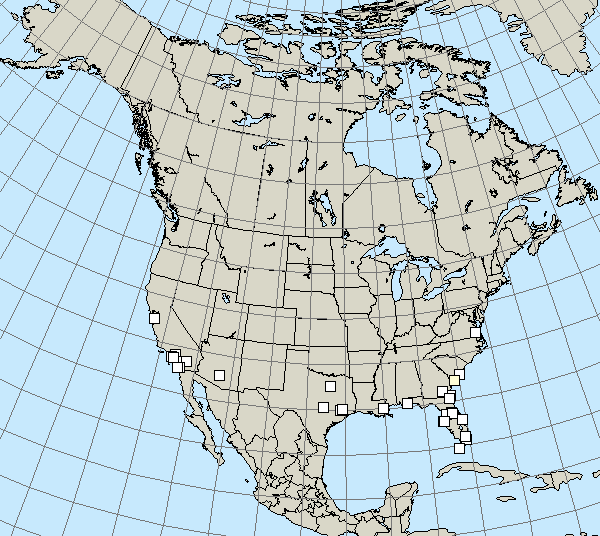An Everyday Miracle Monarchs find milkweed in places and ways that astonish observers. Kathryn Cole could not believe her eyes. "Milkweed just broke the ground yesterday and grew 3 inches in one day. We began checking for eggs and, sure enough, a monarch had already deposited her eggs on the newly emerging plants."
An Urgent Hunt When monarchs arrive from Mexico in the early spring, milkweed is beginning to emerge. Female monarchs must find milkweed quickly. They are at the end of their lives and have eggs to lay. Milkweed is the only food monarch larvae will eat, so finding it is of the utmost importance.
A Touch of Milkweed Dr. Bill Calvert describes what he observes in the field: "The female flits over the field and, when she stops on a plant, she drums the surface with her forelegs." The forelegs are tiny, close to the head, and difficult to see. How do the forelegs help the female find milkweed?
A Combination of Senses "Monarchs use a combination of visual and chemical cues to find milkweed," says monarch scientist Dr. Karen Oberhauser. "Once they land on a plant, they use sensory organs on their feet and heads to tell them if it is a milkweed, and probably the quality of the milkweed."
A Look at Senses It's difficult for scientists to study monarch's senses because an insect's senses are so different from ours. Yet even our own senses are mysterious. When we smell and taste we are actually sensing chemicals in our environment. People and monarchs do this in a similar way.
Chemoreceptors ("KEE mo ree CEP terz") People and monarchs sense chemicals in the environment with special structures called chemoreceptors. They come in different shapes and sizes, but they work in the same way. When a chemical fits a receptor, the way a key fits a lock, the brain identifies the chemical.
Antennae Have Chemoreceptors Monarchs use their antennae to detect plant chemicals. The antennae are covered with chemoreceptors, especially at the tips.
Legs Have Chemoreceptors All six of the female monarch's legs have chemoreceptors. Here you can see the midlegs. Look closely and you'll see the sharp spines monarchs can use to cut the plant and release the chemicals that tell the monarchs it's milkweed.
Eyes Eyes sense light, not chemicals. Monarchs have compound eyes with thousands of lenses. They see thousands of single images at the same time. Monarchs can see in all directions at the same time, too. Monarchs do not see the world in a single image the way we do. The monarch's vision is specialized for seeing colors, direction and movement.
Confusing the Senses Some plant species grow together in groups called 'guilds.' Together, the plants defend themselves by producing a mixture of plant odors. Herbivores, like monarchs, can't find the correct host because there are too many confusing odors. This would explain why monarchs need to use a combination of senses to find milkweed.
Finding Milkweed Picture a monarch floating through the air, following invisible scents to find the milkweed it urgently needs. Watch how a butterfly can locate milkweed that's hidden in a sea of green plants.



